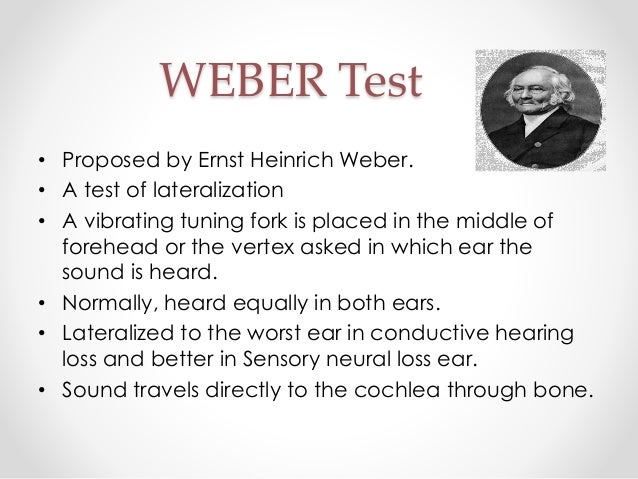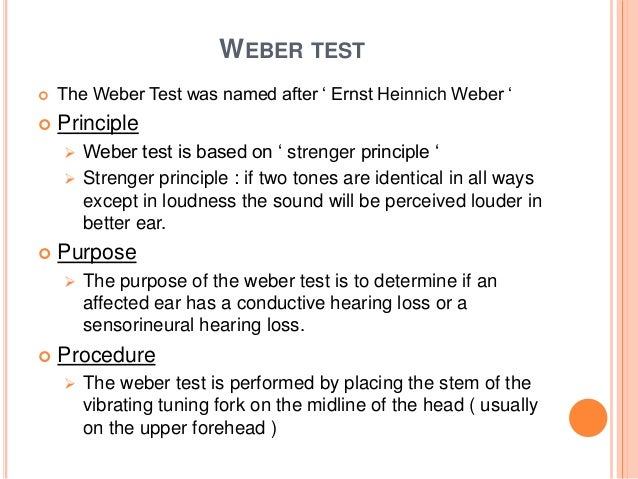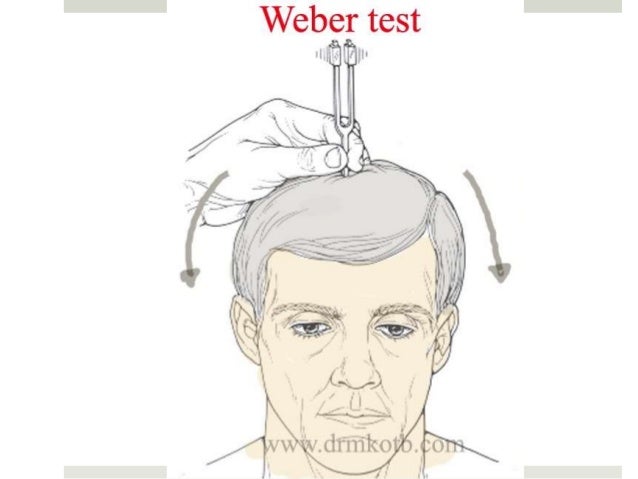
The loudness comparison technique compares loudness of the tone by air conduction to bone conduction. 1, 10 The Rinne TFT compares perceptions of air- and bone-conducted sounds with either the loudness comparison technique or the timed threshold technique. 9 The sound should lateralize to the poorer-hearing ear in the presence of CHL and to the better-hearing ear in the presence of SNHL. With normal hearing, the tuning fork is heard centrally. The Weber TFT involves placement of the vibrating tuning fork on a midline osseous structure (eg, forehead, upper incisors). Weber and Rinne TFTs were defined as follows. If TFTs are to remain valuable elements of a clinical examination, their accuracy, conditions for optimal performance, and limitations should be better understood. 7 The review was restricted to 5 studies that reported raw data, excluded pediatric participants, and did not assess the aforementioned questions pertinent to otolaryngologic practice.

6 One prior systematic review that assessed the accuracy of bedside tests to screen elderly individuals for hearing loss concluded that TFTs lack sufficient reliability and accuracy for use as screening tests. 4, 5 Furthermore, there is disagreement about how large of an air-bone gap (ABG) is necessary for an abnormal Rinne result and whether this value and overall test accuracy differ by tuning fork frequency, material, test technique, or patient population. However, the extant literature contains individual studies questioning if the Rinne and Weber TFTs have sufficient accuracy to identify conductive hearing loss (CHL) and unilateral sensorineural hearing loss (SNHL) or CHL, respectively. Given their persistent use, one might expect high diagnostic accuracy (and evidence) undergirding various TFT applications. The overall accuracy of the Rinne and Weber tuning fork tests in predicting conductive hearing loss associated with OME in children is poor.All subjects Allied Health Cardiology & Cardiovascular Medicine Dentistry Emergency Medicine & Critical Care Endocrinology & Metabolism Environmental Science General Medicine Geriatrics Infectious Diseases Medico-legal Neurology Nursing Nutrition Obstetrics & Gynecology Oncology Orthopaedics & Sports Medicine Otolaryngology Palliative Medicine & Chronic Care Pediatrics Pharmacology & Toxicology Psychiatry & Psychology Public Health Pulmonary & Respiratory Medicine Radiology Research Methods & Evaluation Rheumatology Surgery Tropical Medicine Veterinary Medicine Cell Biology Clinical Biochemistry Environmental Science Life Sciences Neuroscience Pharmacology & Toxicology Biomedical Engineering Engineering & Computing Environmental Engineering Materials Science Anthropology & Archaeology Communication & Media Studies Criminology & Criminal Justice Cultural Studies Economics & Development Education Environmental Studies Ethnic Studies Family Studies Gender Studies Geography Gerontology & Aging Group Studies History Information Science Interpersonal Violence Language & Linguistics Law Management & Organization Studies Marketing & Hospitality Music Peace Studies & Conflict Resolution Philosophy Politics & International Relations Psychoanalysis Psychology & Counseling Public Administration Regional Studies Religion Research Methods & Evaluation Science & Society Studies Social Work & Social Policy Sociology Special Education Urban Studies & Planning BROWSE JOURNALS Age was not associated with outcome for any of the tuning fork tests.

For the Rinne test, an increase in ABG was significantly associated with a higher rate of response air conduction < bone conduction using either the 256 Hz or the 512 Hz fork (p <. The Weber test did not show an association between the ABG and the lateralization response using either the 256 Hz (p =. The tuning fork responses were correlated with the ABG to determine their accuracy. Pure-tone audiometry was performed to establish the presence and degree of an air-bone gap (ABG).

The Rinne and Weber tests were performed using a 256 Hz and a 512 Hz tuning fork. The subjects consisted of 58 children with unilateral or bilateral OME. Patients were recruited from the tertiary Pediatric Otolaryngology Clinic at British Columbia's Children's Hospital in Vancouver.

The purpose of this study was to determine the accuracy of the Rinne and Weber tuning fork tests in predicting the degree of hearing loss secondary to otitis media with effusion (OME) in children compared with pure-tone audiometry.Ī blinded prospective study was performed on cases of unilateral and bilateral OME in children between ages 2 and 11 years.


 0 kommentar(er)
0 kommentar(er)
